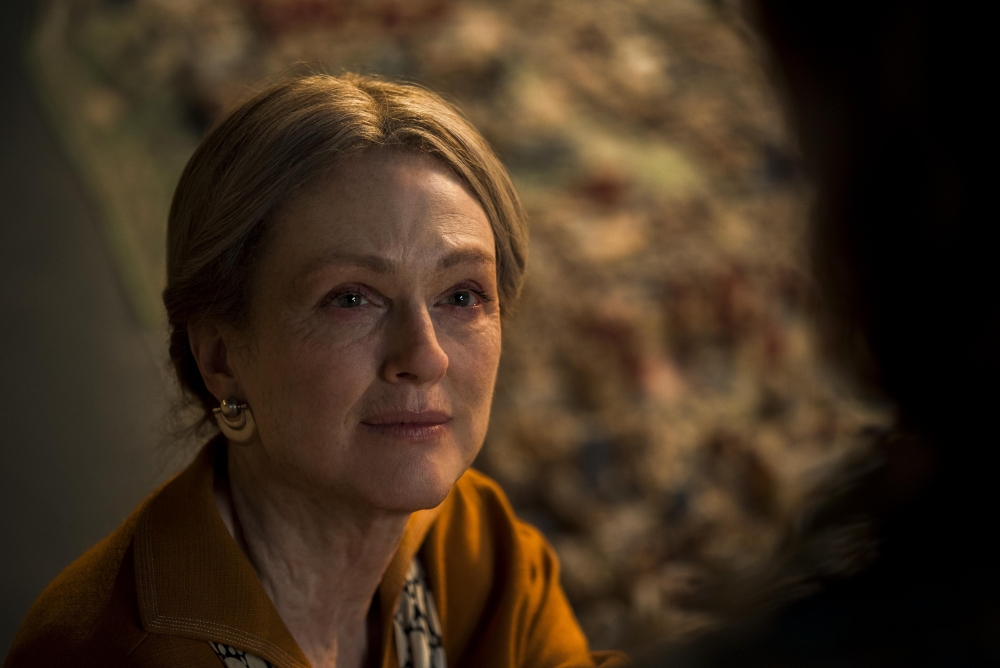It’s easy to see just why two of our greatest working filmmakers, Martin Scorsese and now Todd Haynes, have been attracted to the YA work of author Brian Selznick, who wrote the source material for “Hugo” as well as “Wonderstruck,” the illustrated book that Haynes adapts for his new film. They are stories of lonely childhoods and tentative friendships set in resonant periods for both filmmakers, and while the narrative arcs are simple, family-friendly, and unafraid to iterate and reiterate their broad emotional beats, that very simplicity feels tipsy with cinematic potential. And when you have craftsmen such as these behind the camera, the resulting films are positively drunk with love for the medium: “Wonderstruck” lives in the glory of its filmmaking — its photography, its costuming, its set design, its brilliantly variegated Carter Burwell score.
But there is also a drawback, especially when compared to the engulfing warmth and emotional nuance of Haynes’ magnificent “Carol.” Although the director and his collaborators old and new breathe oxygen and reality and pulsating streetlife into the New York of the 1920s and the 1970s, the film’s two time periods, the story still essentially belongs to the clockwork universe of Selznick’s imagining. It’s a tale of quasi-mystical coincidences, bumbling, uncomprehending authority figures, and improbably serendipitous discoveries, and the YA form somewhat dictates that everything must be neatly solved in the same moment at the end, before the ballerina stops twirling and the music box closes. This is Haynes bringing his full, vibrant panoply of techniques to a story that, in appealing to younger readers, has fewer revelations to offer the adults in the audience. We largely have to make do with the film’s quasi-Spielbergian evocation of childhood excitement, the dazzling craft, and the skill with which Haynes winds the two halves of the film inexorably toward each other.

The main thread of the story follows Ben (Oakes Fegley), a little boy living in the evocatively named Gunflint, Minnesota with his aunt’s family, after his mother (Michelle Williams, in a sliver of a role of which we wish we had more) is killed in a car crash. She had promised to reveal to him the identity of his father “when the time is right,” but died before that time ever came, and the grieving Ben, after he suffers an accident that takes his hearing, runs away to New York City to pursue a clue he’s found about the man’s identity. In parallel, in black and white and entirely without voiced dialogue, we watch the seemingly unrelated but cosmically symmetrical 50-years-earlier story of Rose (appealing newcomer Millicent Simmonds), a young deaf Hoboken girl who also runs away to Manhattan to find a glamorous actress played, in the first of two small but pivotal roles, by Julianne Moore.
For a time, the shifts between the two strands seem to come almost at random, and occasionally some drama is lost in the cut as the stakes build for Ben but we return to Rose before they pay off, and vice versa. But soon the rhythm settles, as the stories begin to reveal themselves as a kind of continuum that will culminate in a reveal that is so beautifully played (all the more remarkable because so much of it is delivered by the not-especially-filmic device of having handwritten notes read aloud) that it doesn’t matter that it lacks surprise: it’s as satisfying as a deep sigh.

But really, if Haynes’ last few films have been temples dedicated to the talents of his costume designer Sandy Powell and regular cinematographer Ed Lachman, “Wonderstruck” might just be the ultimate showcase for his “Velvet Goldmine,” “Mildred Pierce” and “Carol” composer, Carter Burwell. It’s seldom that the potential for score as a storytelling tool has been as thoroughly mined as it is here, but with both the child protagonists being deaf, the music is required not just to carry emotional freight but to communicate plot in a way not seen since the silent era (which the 1920s segment deliberately evokes). Cymbal crashes denote the smashing of glass, sweet, starry twinkles and lush melodies smooth the transitions between the periods and then in the 1970s sections he really gets to let loose. Alongside choice soundtrack cuts from Bowie and Deodato, Burwell adds in noodling electric guitar and twangy funk notes to his classical compositions. It adds zip to chase sequences and texture to street scenes, which unfold against Mark Friedberg‘s vividly imagined production design (the 1920s Hoboken Ferry Port, and the Port Authority Bus Terminal of the 1970s are truly spectacular recreations). As simple and sweet-sad as the film’s emotional core is, the loving detail accorded every aspect of the filmmaking is lavish, maximalist, uncontainable.
That is a little ironic, as it’s a film in which containment, control and classification play such a peculiar role, as in a scale model of New York or a carefully maintained natural history exhibit, in which ferocious animals are frozen mid-leap behind glass. The major scenes happen in museums, which are places of wonder and tantalising mystery to these children, not stuffy buildings full of dead things. These are, perhaps, children only really found in cinema and in books, hesitant, made wise beyond their years by loss, yet fundamentally hopeful, innocent, and good. They’re kids of a breed nostalgically beloved by filmmakers and writers, but rare in real life now, and one suspects, ever. They want to grow up to be museum curators and model makers, they have nightmares with eloquent and personally revelatory explanations, they learn the constellations, make easy friends with other lonely kids, and go on adventures that will somehow fix all of their broken parts and make them all whole again. Haynes has made a lovely wish-fulfillment movie, and you do not have to believe it, to be struck by wonder. [B+]
Check out the rest of our coverage from the 2017 Cannes Film Festival by clicking here.





